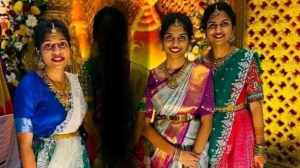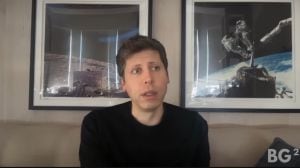The road to Rashtrapati Bhawan
Every Presidential election is an occasion for renewal of interest in the office of the President. Obviously, there is every need for people...

Every Presidential election is an occasion for renewal of interest in the office of the President. Obviously, there is every need for people to know how their President is elected. The process of choosing India’s 13th President is on. The nomination papers of both Dr A P J Abdul Kalam and Dr Lakshmi Sehgal have been found in order by the Returning Officer. A contest is now a certainty.
Polling is scheduled for July 15, while the five-year term of present incumbent K R Narayanan expires on 24 July. The new President takes over the day after, on July 25. There have been eleven Presidential elections so far.
Under the Constitution and the law, any citizen who’s 35 years of age or more can be a candidate for Presidency, provided he or she is not disqualified on grounds of holding an office of profit or being of unsound mine, an undischarged insolvent or one convicted of certain offences. At least 50 electors must propose and another 50 should second the nomination of a candidate. A security deposit of Rs 15,000 is also required.
|
The only person to be elected without a contest was Sanjiva Reddy in ’77, while the most hotly contested election was that of V V Giri. And the ’87 election caused the greatest anxiety, when apart from Venkataraman and Justice Iyer, Mithilesh Kumar was feared to have been set up to get the election countermanded |
When the question of the method of election of the President came up for consideration before the Constituent Assembly, it was felt that the election merely by a majority of members of the Union Parliament could make him a nominee of the ruling party like the Prime Minister and such a President could not represent the constituent States of the Union.
On the other hand, if the President was directly elected by the people, he could become a rival centre of power to the Council of Ministers which would have been against the parliamentary system. The founding fathers devised a middle course under which our President is elected by an electoral college consisting of the elected members of the two Houses of Parliament and Legislative Assemblies of the States.
The thinking in the Constituent Assembly was that such an electoral college would make the President the elected representative of the whole nation with a clear voice given to the States. The election is held by secret ballot under a system of proportional representation by means of the single transferable vote. However, since there’s only one seat to be filled, there can be no scope for proportional representation. The system more appropriately could be called a system of alternate vote, wherein each elector has as many preferences as there are candidates and second or subsequent preferences are in the nature of alternate choices, which can be taken into account if no candidate wins on the basis of first preferences.
With a view to secure uniformity among the States inter se as well as parity between the States as a whole and the Union, the value of the vote of an MLA was to be arrived at by dividing the population of the State by the number of MLAs multiplied by 1000 and the value of the vote of an MP was to be arrived at by dividing the total value of the votes of all the MLAs by the number of MPs in the electoral college.
The method of providing parity between the States as a whole on the one hand and the Union on the other meant that the whole process was weighted in favour of the representatives of the States. They got double representation— first, as members of the Council of States and secondly as members of the State Assemblies. This was done deliberately to make the office of President command unquestioning support from the entire country and the constituent States. The idea of providing uniformity in the scale of representation of different States inter se was broadly to provide representation on the basis of population and to respect the one-man-one-vote principle and the concepts of one Indian citizenship and equality.
The only person to be elected without a contest was Dr Sanjiva Reddy in 1977. While the most hotly contested election was that of V V Giri where second-preference votes had to be counted. The only person to be elected to the office of President for two terms was Dr Rajendra Prasad. The election that was most politically most interesting and caused the greatest anxiety was that of 1987, when apart from R Venkataraman and Justice Krishna Iyer, there was a third valid candidate, Mithilesh Kumar, who was feared to have been set up under a sinister design to get the election countermanded.
In the present contest, according to rough calculations that can be made on the basis of the support declared by different parties, Dr Kalam should win with an overwhelming 10 to 1 majority.
The total value of all votes would be nearly 11.5 lakh while the value of the votes of the members of the left parties supporting Dr Sehgal may add up to less than one lakh (See box). Under the circumstances, the fight is obviously intended to be merely symbolic. It’s most surprising that Dr Sehgal, a committed lieutenant of Netaji Subhash Chandra Bose, should be keeping company with the communists who had once called Netaji and the INA all sorts of names. It would have been ideal if the left had not insisted on once again trying to swim against the national current. It could have been gracious and allowed Dr Kalam to be elected unanimously.
In the whole drama that preceded the consensus on Dr Kalam’s name, the names of some other outstanding personalities came up, including Dr Karan Singh, P C Alexander, K R Narayanan himself and Vice-President Krishan Kant. But, till the very end, the Congress and the other opposition parties could not put forward a name that could be acceptable to the NDA. In the final act, the NDA came forward with a name that could not be objected to.
It was good that the main political parties realised the wisdom of having a consensus candidate. If the BJP (or NDA) and the Congress had insisted upon putting up their own separate candidates, neither could be sure of a win. The prime consideration throughout, therefore was selecting a person on whom the main political parties could agree and who could represent the widest possible national consensus. Kalam, then, was obviously the Man of the Hour.
The talk about his lack of political experience is poppycock. That he is one of the greatest sons of India, an outstanding applied scientist, recipient of the Bharat Ratna, a non-party and non-political person with truly secular and patriotic credentials and above all a superb human being, are all additional qualifications for a person occupying Rashtrapati Bhavan at the present critical times in the nation’s history.
(Subhash Kashyap was a member of the National Commission to Review the Working of the Constitution and the Chairman of its Drafting and Editorial Committee. As Secretary-General of Lok Sabha, he was Returning Officer for the 1987 Presidential Election)


- 01
- 02
- 03
- 04
- 05




























